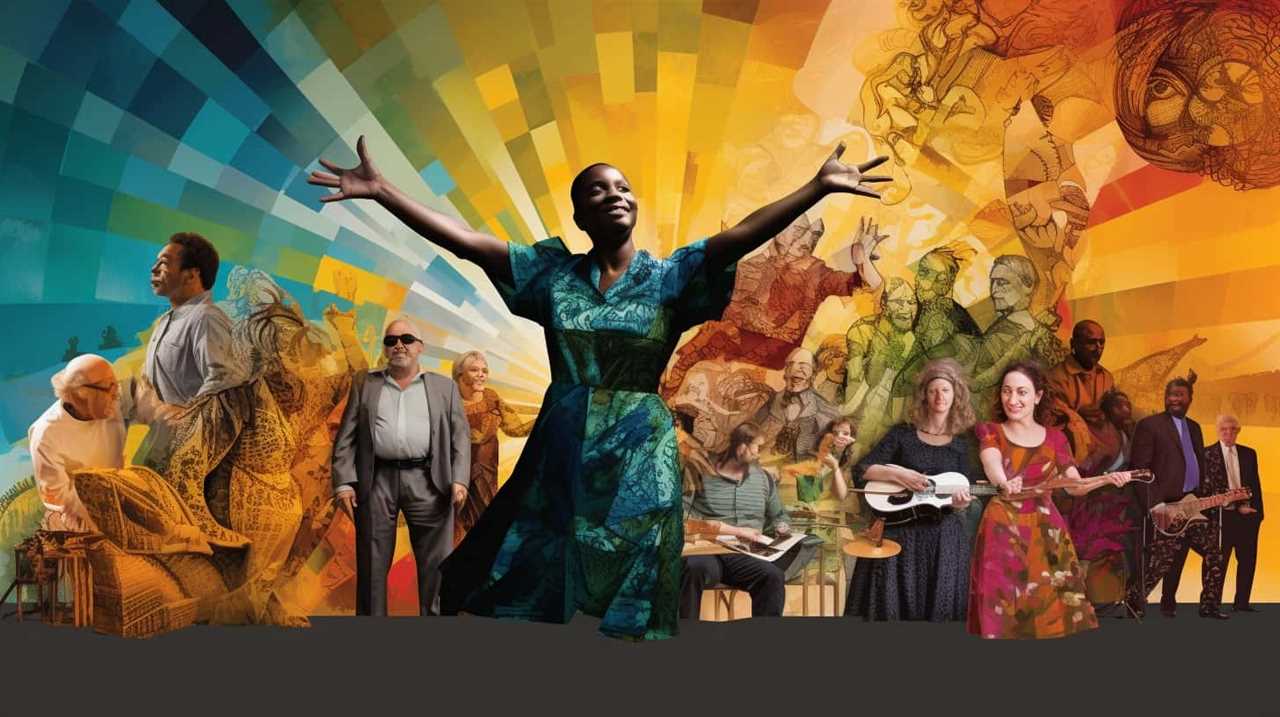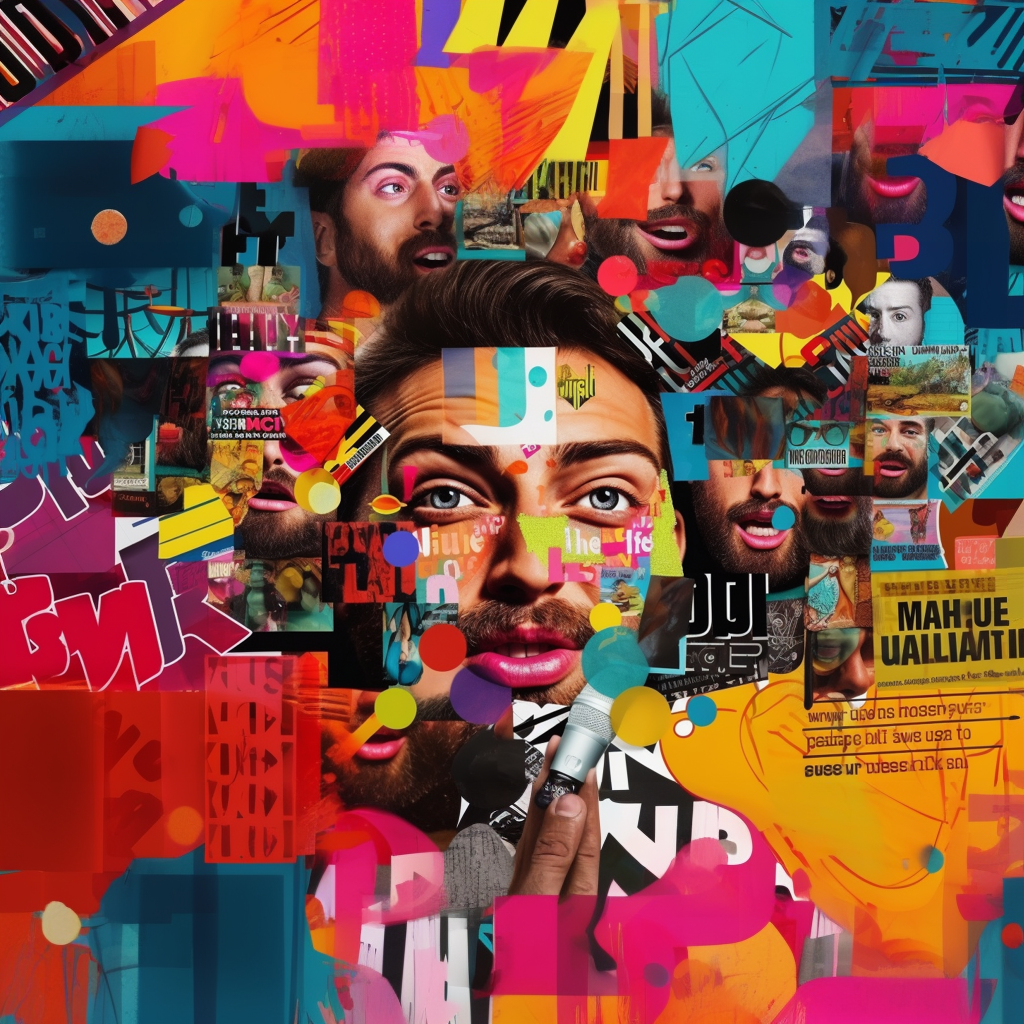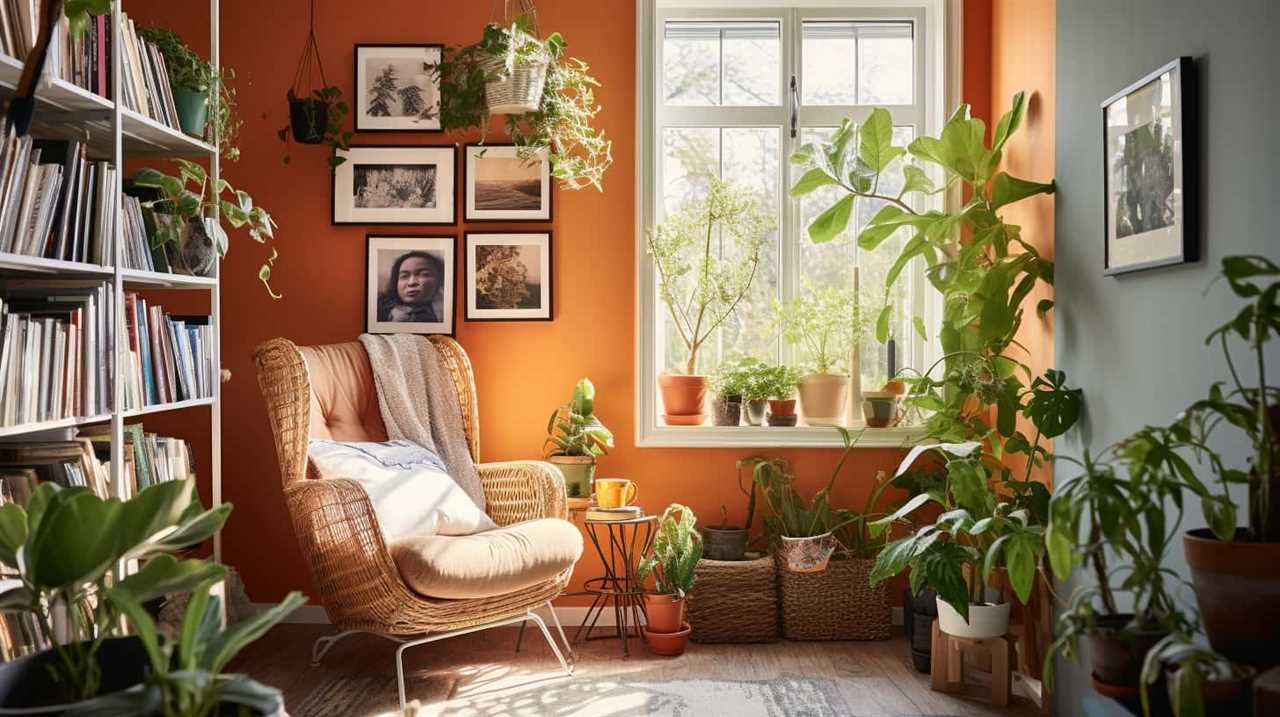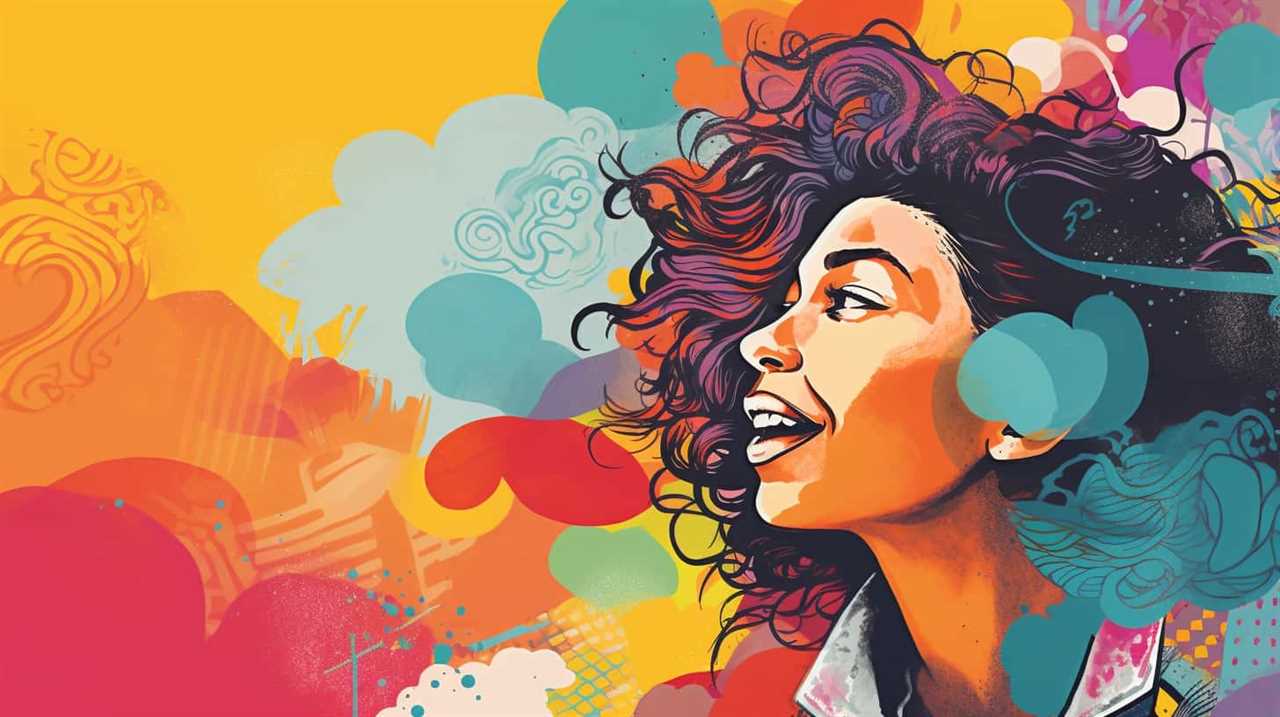Have you ever found yourself staring at a blank canvas, struggling to bring your creative ideas to life?
Imagine this: you’re a talented graphic designer working on a high-profile project, but you’re suddenly struck by a creative block. Panic sets in as you struggle to find inspiration.
Fear not, for there are strategies to overcome these obstacles and unleash your creativity! By embracing the frustration and practicing mindfulness, you can clear your mind and unlock new possibilities.
Exploring different art forms and stepping outside of your comfort zone can also ignite fresh ideas. Engaging in creative exercises and seeking support from a like-minded community can provide valuable feedback and encouragement.
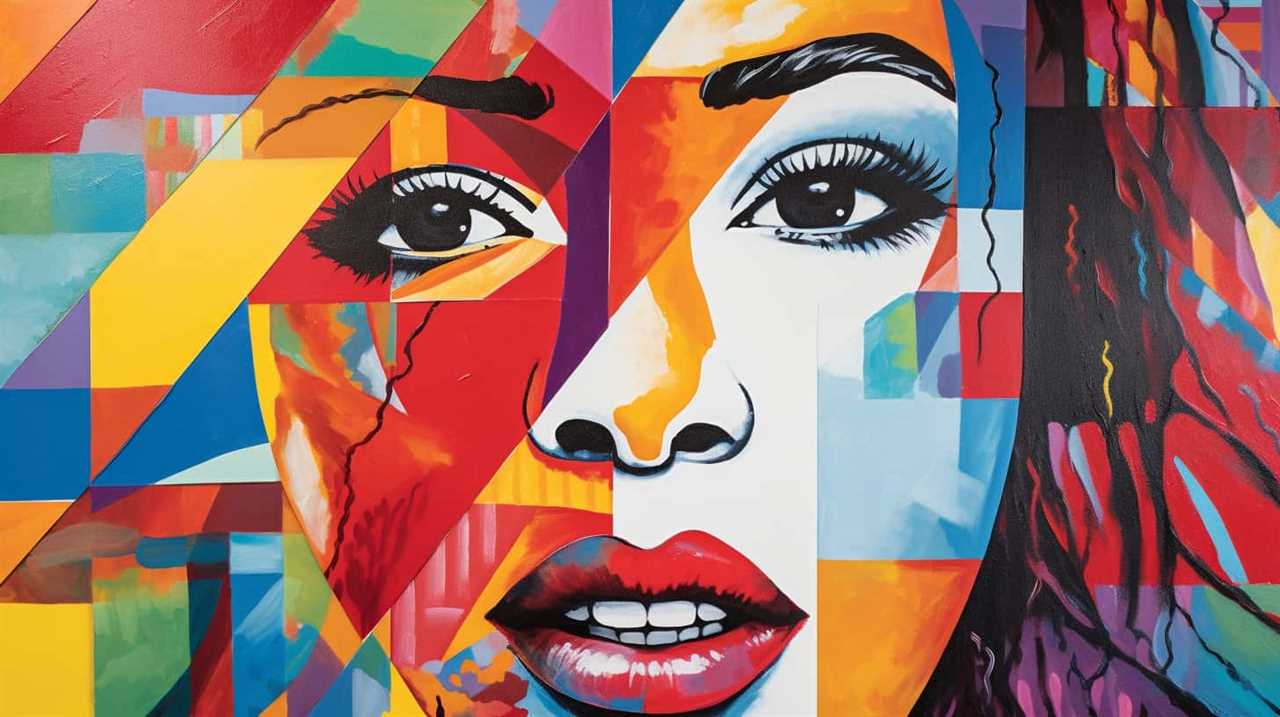
Remember, the key is to embrace the process and let go of perfection.
Key Takeaways
- Recognize signs and symptoms of a lack of inspiration or flow
- Embrace discomfort and frustration as opportunities for growth and creativity
- Incorporate mindfulness and meditation into the creative process to stimulate creativity and reduce stress
- Seek inspiration from different art forms, techniques, and sources to spark new ideas
Recognizing the Creative Block
To recognize a creative block, you need to identify the specific signs and symptoms that indicate a lack of inspiration or flow in your creative process. Recognizing the struggle is the first step towards finding motivation and overcoming the block.
It’s important to pay attention to your thoughts and emotions when engaging in a creative endeavor. Are you feeling stuck? Do you find it difficult to come up with new ideas? Are you experiencing a lack of enthusiasm or passion? These are all signs that you may be facing a creative block.
Another indication of a creative block is a sense of frustration or self-doubt. You may find yourself questioning your abilities or feeling insecure about your work. This can be a challenging experience, but it’s important to remember that all creatives go through periods of doubt. Recognizing these feelings is crucial in order to address and overcome them.
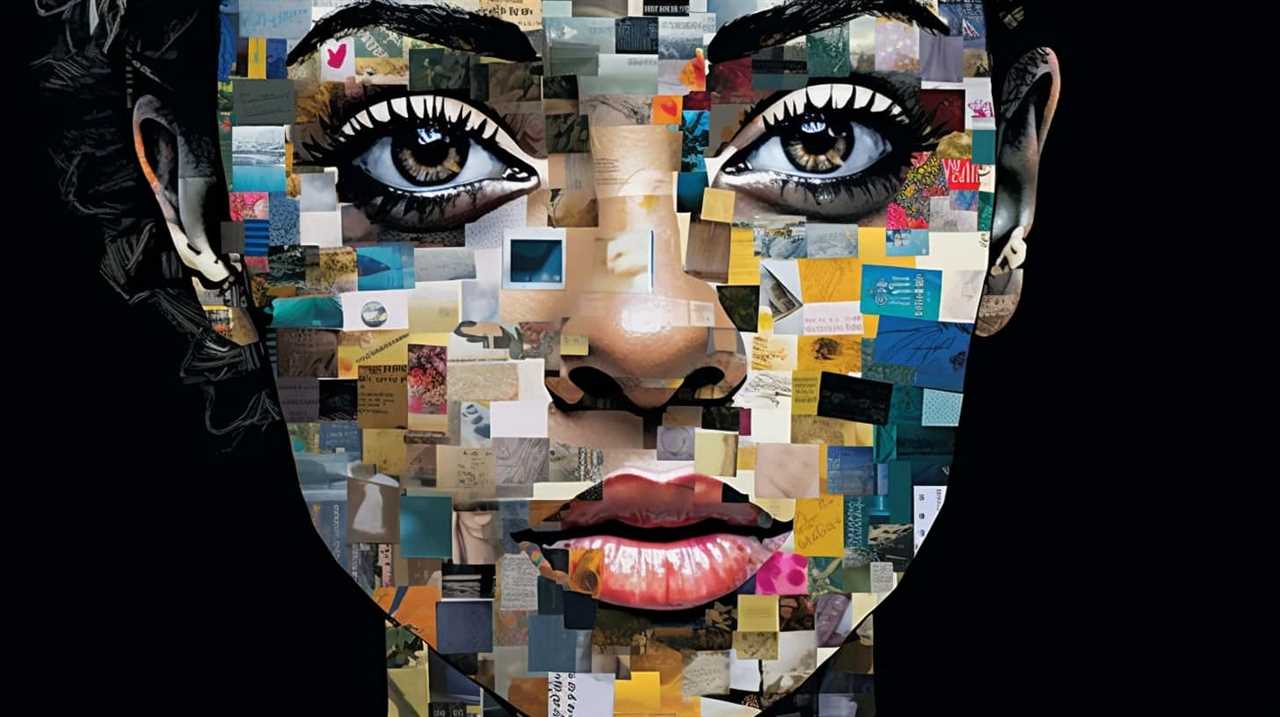
One way to find motivation is to seek inspiration from different sources. Expose yourself to new experiences, whether it’s visiting an art exhibition, reading a book, or taking a walk in nature. Surround yourself with people who inspire you and encourage your creativity. Additionally, consider trying new techniques or exploring different mediums to spark your imagination.
Embracing the Frustration
Embracing the frustration that comes with creative blocks can be a transformative experience. Instead of letting the frustration overwhelm you, harness it as fuel for your creativity.
Allow yourself to sit with the discomfort and use it as an opportunity to dig deeper, find new perspectives, and ultimately turn frustration into inspiration.
Harnessing Creative Frustration
When facing creative frustration, one effective strategy is to embrace the feeling and use it as fuel for your creative process. Instead of letting frustration hold you back, learn to harness it and turn it into a catalyst for creative breakthroughs. Here’s how you can do it:
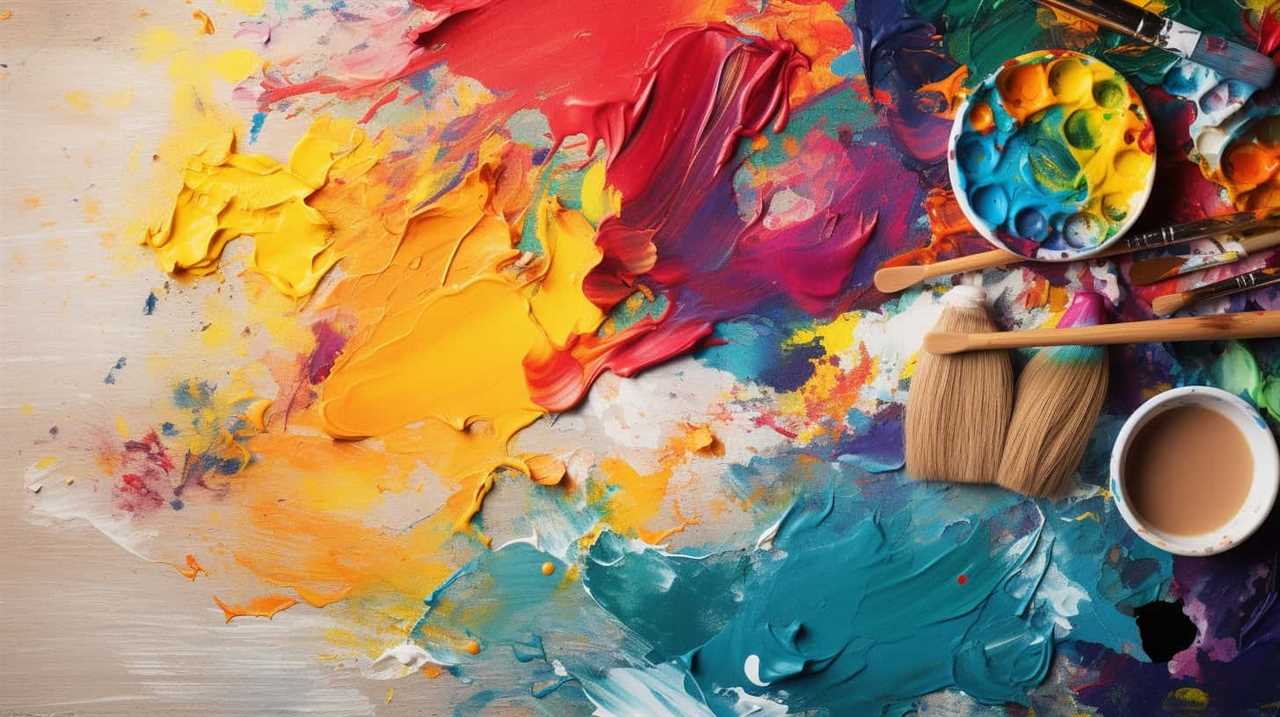
- Embrace the discomfort: Instead of avoiding frustration, acknowledge it and accept it as a natural part of the creative journey. Embracing the discomfort can help you tap into your emotions and explore new ideas.
- Reframe your perspective: Instead of viewing frustration as a roadblock, see it as an opportunity for growth. Use it as a motivator to push yourself beyond your comfort zone and discover innovative solutions.
- Channel your energy: Take the energy from your frustration and channel it into your creative work. Use it as a driving force to fuel your determination and perseverance in finding fresh ideas.
Turning Frustration Into Inspiration
One effective way to turn frustration into inspiration is by embracing the discomfort and using it as fuel for your creative process. Instead of letting frustration derail your progress, you can harness its energy and transform it into motivation.
Remember, frustration is a sign that you’re pushing yourself beyond your comfort zone, which is where true innovation happens. When faced with limitations, instead of viewing them as obstacles, see them as opportunities for creative problem-solving.
Constraints can actually enhance your creativity by forcing you to think outside the box and find unconventional solutions. Embrace the challenge and let frustration propel you forward. Use it as a catalyst to push your boundaries and discover new ideas.
Mindfulness and Meditation Practices
Try incorporating mindfulness and meditation into your creative process to overcome blocks. These practices can help you cultivate a focused and calm state of mind, allowing your creativity to flow freely.
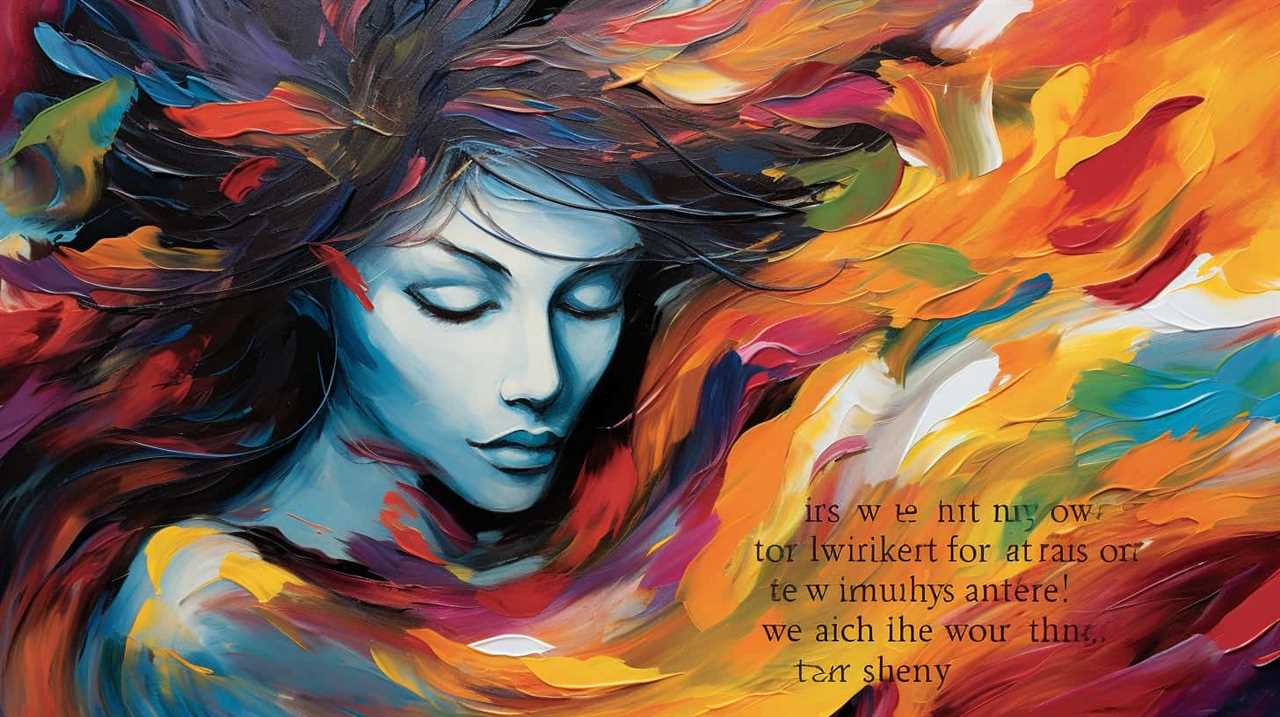
Here are three ways mindfulness and meditation can benefit your creative endeavors:
- Increased awareness: Mindfulness techniques, such as deep breathing and body scans, can help you become more aware of your thoughts, emotions, and physical sensations. This heightened awareness can provide valuable insights into your creative process, allowing you to identify and address any blocks that may be hindering your progress.
- Enhanced creativity: Meditation has been shown to stimulate the brain’s creative centers, promoting divergent thinking and novel ideas. By regularly engaging in meditation, you can tap into your innate creativity and access new perspectives that can inspire innovative solutions to your creative challenges.
- Stress reduction: Creative blocks often arise from stress and overwhelm. Meditation has been proven to reduce stress and promote relaxation, helping you to release tension and create a conducive environment for creativity to flourish.
Incorporating mindfulness and meditation practices into your creative process can be a powerful tool for overcoming blocks and unlocking your creative potential. So, why not give it a try? Take a few moments each day to cultivate mindfulness and observe how it positively impacts your creative flow.
Finding Inspiration in Everyday Life
To find inspiration in everyday life, explore your surroundings with a curious and observant eye. It’s easy to get caught up in the busyness of life and overlook the beauty and meaning that surrounds us. But by taking the time to really see and appreciate the world around you, you can unlock a wellspring of creative ideas.
Start by noticing the small details—the way the sunlight filters through the leaves, the intricate patterns on a butterfly’s wings, the sound of raindrops on a windowpane. These seemingly insignificant moments can hold immense beauty and meaning if we’re open to seeing them.
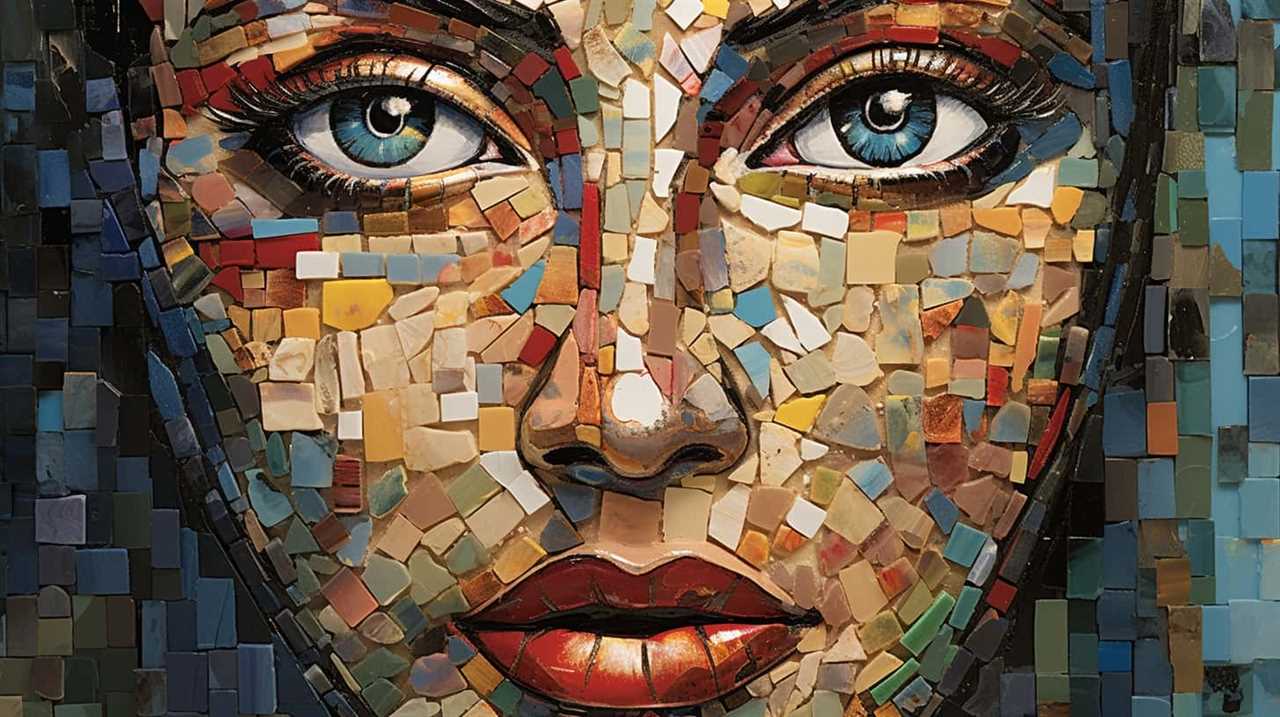
Take a walk in nature and let yourself be fully present in the moment. Notice the colors, the textures, the smells. Allow yourself to be inspired by the wonders of the natural world.
But inspiration can also be found in the everyday moments of our lives. Pay attention to the interactions you have with others, the conversations you overhear, the stories you witness. There’s beauty and meaning in the simplest of moments, if only we take the time to look for it.
Exploring Different Art Forms
Expand your creative horizons by experimenting with various art forms. Exploring innovation and embracing unconventional creativity can spark new ideas and break through creative blocks. Here are three ways you can explore different art forms to enhance your creative process:
- Cross-Pollinate: Take inspiration from one art form and apply it to another. For example, if you’re a writer, try incorporating visual elements into your storytelling by creating illustrations or storyboards. This cross-pollination can bring a fresh perspective to your work and stimulate new ideas.
- Collaborate: Engage with artists from different disciplines to collaborate on projects. Working with musicians, dancers, or visual artists can introduce you to new techniques and ways of thinking. By merging different art forms, you can create innovative and multidimensional works that push the boundaries of creativity.
- Experiment Fearlessly: Step out of your comfort zone and try art forms that are completely new to you. Whether it’s pottery, photography, or performance art, embracing the unknown can ignite your creativity and unlock hidden talents. Allow yourself to make mistakes and learn from them, as this process of exploration can lead to unexpected breakthroughs.
Taking Breaks to Recharge
When you find yourself stuck in a creative block, sometimes the best thing you can do is take a break and recharge.

Mindful meditation can help relax your mind and clear away any mental clutter, allowing fresh ideas to flow.
Engaging in physical activity, whether it’s going for a walk or doing yoga, can also help stimulate your creativity by getting your body moving and refreshing your perspective.
Mindful Meditation for Relaxation
Take a moment to recharge and relax through mindful meditation. In today’s fast-paced and demanding world, it’s crucial to prioritize self-care and find ways to alleviate stress. Mindful meditation is an effective technique that can help you achieve a state of relaxation and rejuvenation.
Here are three ways to incorporate mindful meditation into your routine:

- Set aside dedicated time: Find a quiet space where you can sit comfortably and focus on your breath. Start with just a few minutes and gradually increase the duration as you become more comfortable with the practice.
- Practice mindfulness throughout the day: Take short breaks throughout the day to pause, breathe, and bring your attention to the present moment. This can help reduce stress and increase clarity and focus.
- Use guided meditation apps or videos: If you’re new to meditation or find it difficult to quiet your mind, guided meditation apps or videos can be helpful. They provide structured guidance and help you stay focused on the present moment.
Incorporating mindful meditation into your routine can provide numerous benefits, including reduced stress, increased creativity, and improved overall well-being. So take a moment for yourself and recharge through the power of mindful meditation.
Engaging in Physical Activity
To boost your creativity and overcome creative blocks, try incorporating physical activity into your routine as a way to recharge and refresh.
Engaging in physical activity not only benefits your physical health but also nurtures the mind-body connection, fostering mental clarity and promoting innovative thinking.
When you feel stuck or uninspired, taking a break to engage in physical activity can provide a much-needed reset. Whether it’s a brisk walk, a yoga session, or a quick workout, moving your body can help release tension and increase blood flow to the brain, stimulating creativity.

Physical activity also releases endorphins, which can improve your mood and enhance your overall well-being.
In addition to its immediate benefits, regular physical activity can have long-term effects on your creative process. It can improve your focus and concentration, allowing you to delve deeper into your work and generate fresh ideas. It can also provide a mental escape from the pressures of your projects, allowing you to return with a renewed perspective and increased productivity.
Incorporating physical activity into your routine doesn’t have to be time-consuming or complicated. Find activities that you enjoy and that fit your schedule, and make them a regular part of your day. Whether it’s a short walk during your lunch break or a yoga routine before starting your work, these small breaks can have a significant impact on your creative output.
Seeking Feedback and Collaboration
One effective strategy for overcoming creative blocks is engaging in feedback and collaboration with others. Seeking input from others can provide fresh perspectives and new ideas that can help break through the barriers of a creative block. Collaborative projects can also spark inspiration and motivation, as working with others can create a sense of accountability and support.

Here are three ways to leverage feedback and collaboration to overcome creative blocks:
- Seek constructive criticism: Actively seek feedback from trusted peers or mentors who can provide constructive criticism on your work. Their insights can help you identify blind spots and areas for improvement, pushing you to think differently and expand your creative boundaries.
- Join creative communities: Surround yourself with like-minded individuals by joining creative communities or attending workshops and conferences. Engaging with a diverse group of people who share your passion can ignite new ideas and stimulate your creative energy.
- Collaborate on projects: Team up with others on collaborative projects to leverage the collective creativity and skills of the group. Working together on a shared goal can help overcome individual creative blocks and foster a collaborative environment that breeds innovation.
Journaling and Reflection
When it comes to overcoming creative blocks, one powerful strategy is journaling and reflection.
Writing for self-discovery allows you to delve into your thoughts and emotions, uncovering hidden insights and perspectives.
Writing for Self-Discovery
Start by grabbing a pen and journaling your thoughts and reflections to unlock the power of self-discovery. Writing for self-discovery isn’t just about putting words on paper; it’s a transformative process that allows you to delve deep into your thoughts, emotions, and experiences.
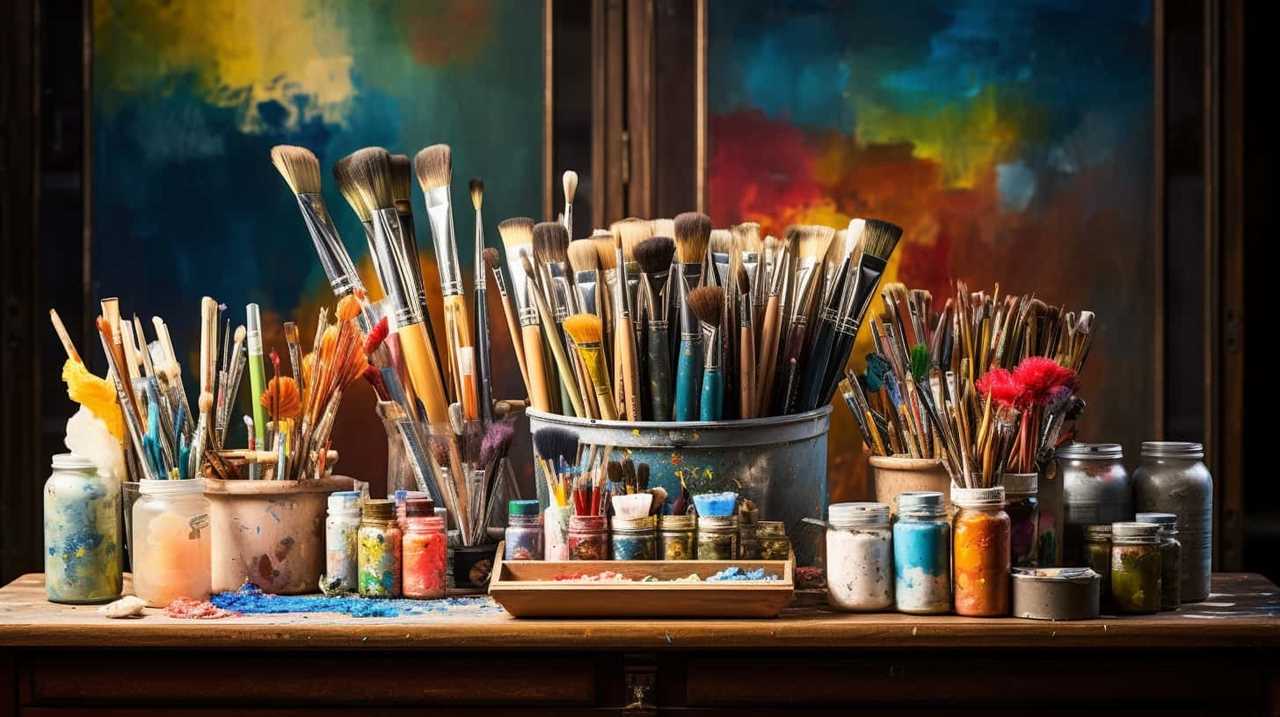
Here are three techniques to guide you on your journey of self-exploration:
- Writing prompts: Use thought-provoking questions or statements to inspire your writing. These prompts can help you uncover hidden desires, fears, or aspirations that you may not have been aware of before.
- Stream of consciousness: Set a timer for a few minutes and write whatever comes to mind without censorship. This technique allows your thoughts to flow freely and reveals insights that may have been buried beneath the surface.
- Reflective writing: After a significant event or experience, take some time to reflect and write about your thoughts, feelings, and lessons learned. This process helps you gain clarity, process emotions, and gain a deeper understanding of yourself.
Through journaling and reflection, you can tap into your innermost thoughts and emotions, leading to personal growth, increased self-awareness, and innovative thinking.
Promoting Self-Expression Through Writing
To promote self-expression through writing, grab a journal and pen to begin exploring your inner thoughts and emotions.
Journaling is a powerful tool that allows you to delve into the depths of your mind and uncover hidden treasures of creativity. When faced with writer’s block, journaling can help unlock the barriers that inhibit your flow of ideas.
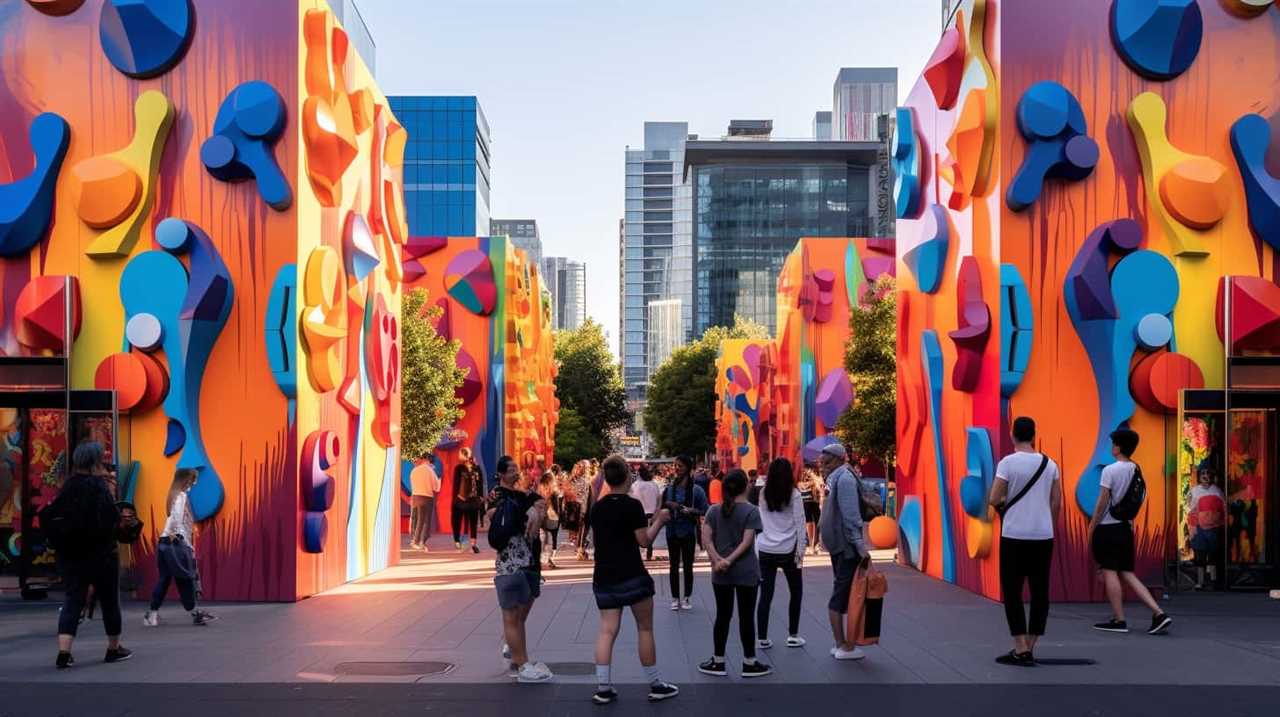
Write freely and without judgment, allowing your thoughts to flow onto the pages. Reflect on your experiences, dreams, and fears, using writing as a means to process and understand them better.
Experiment with different self-expression techniques such as stream of consciousness writing or writing prompts to spark inspiration.
Through journaling and reflection, you can bypass creative blocks and cultivate a deeper connection with your authentic voice.
Setting Realistic Goals and Deadlines
One effective strategy for overcoming creative blocks is establishing achievable objectives and deadlines. Setting realistic goals and deadlines helps you stay focused and motivated, ensuring that you make progress and complete your creative projects.

Here are three ways in which realistic goal setting and effective time management can help you overcome creative blocks:
- Break it down: When facing a creative block, it can be overwhelming to tackle a large project all at once. By breaking it down into smaller, manageable tasks, you can set realistic goals for each step of the process. This allows you to make steady progress and prevents you from feeling overwhelmed.
- Set deadlines: Deadlines are powerful motivators that push you to take action. By setting specific deadlines for each task, you create a sense of urgency and hold yourself accountable. This helps you overcome procrastination and ensures that you stay on track to complete your project.
- Prioritize and allocate time: Effective time management is crucial for overcoming creative blocks. Prioritize your tasks based on their importance and allocate dedicated time for each one. By managing your time effectively, you can ensure that you have enough time to work on your creative projects without feeling rushed or overwhelmed.
Experimenting With New Techniques
When faced with a creative block, it’s time to step out of your comfort zone and embrace artistic risk. Experimenting with new techniques not only challenges your abilities, but also opens up a whole new world of creative possibilities.
Seek fresh inspiration from different sources, whether it’s visiting art galleries, exploring nature, or engaging in conversations with other artists. By trying something new, you might just discover a hidden talent or find a unique approach that sparks your creativity.
Embrace Artistic Risk
Take risks with your art by experimenting with new techniques. Embracing artistic risk is essential for growth and innovation in your creative process.
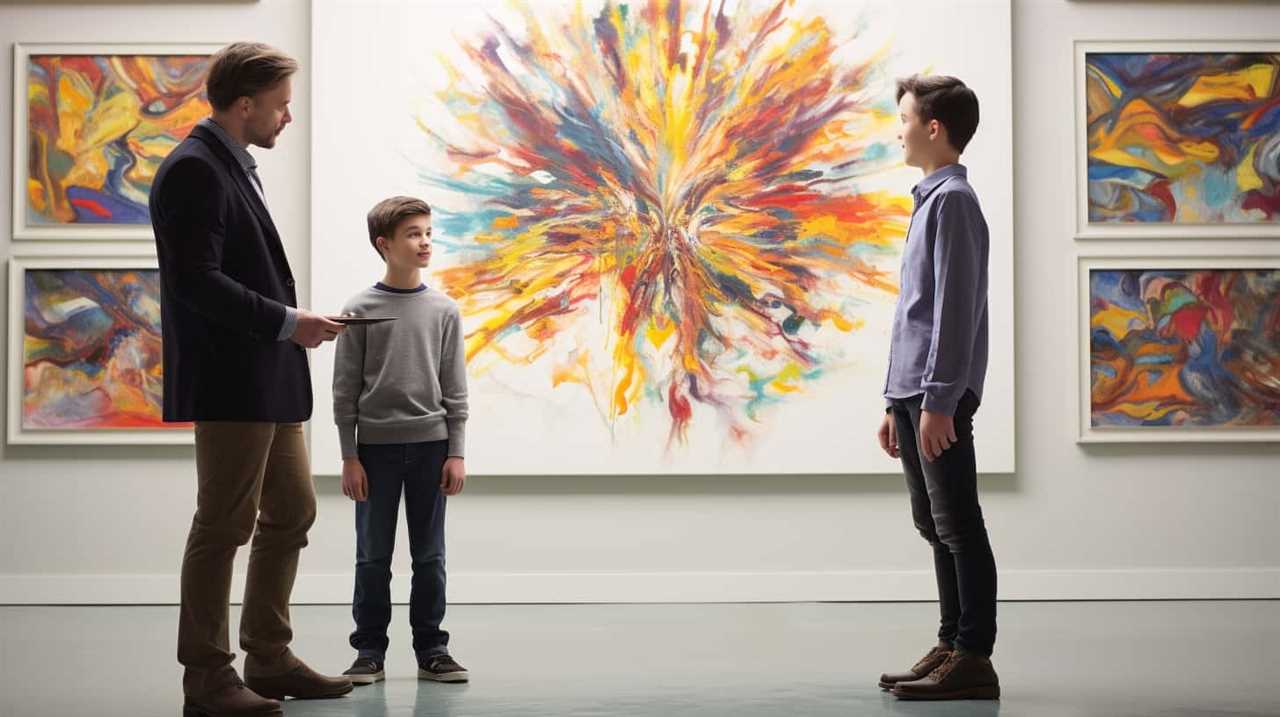
Here are three reasons why you should embrace artistic risk:
- Pushing Boundaries: Trying new techniques allows you to push the boundaries of what you thought was possible. By stepping out of your comfort zone, you open yourself up to new possibilities and creative breakthroughs.
- Finding Your Unique Voice: Experimenting with new techniques helps you discover your unique artistic style. It allows you to explore different ways of self-expression and find what resonates with you the most. Embracing artistic risk enables you to stand out from the crowd and create work that’s truly authentic.
- Overcoming Creative Blocks: When you’re feeling stuck or experiencing a creative block, trying something new can help reignite your passion and spark fresh ideas. It challenges your mind and encourages creative exploration, leading to new discoveries and breakthroughs.
Seek Fresh Inspiration
To overcome creative blocks, you can actively seek fresh inspiration by experimenting with new techniques. One effective way to do this is by exploring nature. Take a walk in the park, hike in the mountains, or simply sit by the beach. Nature has a way of sparking creativity and providing a fresh perspective.
Another option is to visit art galleries. Surround yourself with different styles and mediums of art. Observe the brushstrokes, colors, and compositions. Allow yourself to be inspired by the creativity of others.
Stepping Outside of Your Comfort Zone
One effective way to overcome creative blocks is by pushing yourself beyond your comfort zone. When you step outside of what’s familiar and comfortable, you open yourself up to new possibilities and perspectives. Here are three ways to embrace this approach:

- Explore new hobbies: Engaging in activities outside of your usual creative pursuits can spark fresh ideas. Whether it’s painting, photography, or cooking, trying something new can stimulate your creativity and provide a different perspective on problem-solving.
- Try unconventional methods: Break free from traditional approaches and experiment with unconventional methods. Take risks, challenge the status quo, and think outside the box. Embracing unconventional techniques can lead to innovative solutions and unexpected breakthroughs.
- Seek discomfort: Growth happens outside of your comfort zone. Push yourself to take on projects or tasks that intimidate you. Embrace the discomfort and embrace the opportunity to learn and grow. By stepping into the unknown, you expand your creative boundaries and unlock new levels of inspiration.
Remember, creativity thrives when you embrace the unfamiliar. By stepping outside of your comfort zone, exploring new hobbies, trying unconventional methods, and seeking discomfort, you’ll overcome creative blocks and unleash your innovative potential.
Embrace the unknown, embrace growth, and watch your creativity soar.
Engaging in Creative Exercises and Prompts
When you step outside of your comfort zone and explore new hobbies or try unconventional methods to overcome creative blocks, another effective strategy is engaging in creative exercises and prompts.
These exercises and prompts serve as catalysts for inspiration, pushing you to think outside the box and explore new ideas.
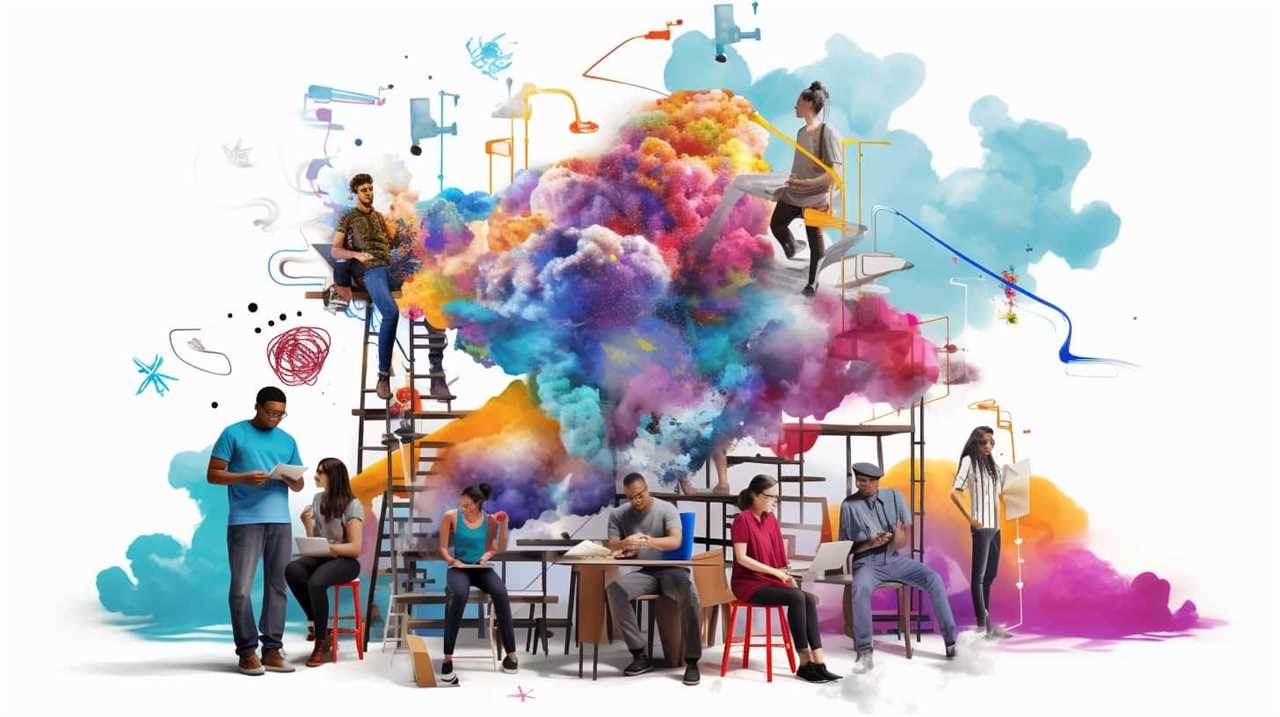
One way to engage in creative prompts is through brainstorming sessions. Set a timer for a specific amount of time, grab a pen and paper, and let your thoughts flow freely. Write down anything that comes to mind, without judgment or self-censorship. You’ll be surprised at the unique and innovative ideas that emerge.
Another method is to explore different exercises that stimulate creativity. Try engaging in activities like drawing, painting, or even dancing. These activities allow you to tap into your subconscious mind and unleash your creativity in ways you never thought possible.
Seeking Support From a Creative Community
Joining a creative community can provide invaluable support and guidance for overcoming creative blocks. When you surround yourself with like-minded individuals who understand the struggles and challenges of the creative process, you gain access to a network of support that can help you push through your creative blocks and find new inspiration. Here are three ways that seeking support from a creative community can help you overcome creative blocks:
- Creative workshops: Participating in creative workshops allows you to learn new techniques, explore different mediums, and expand your creative horizons. These workshops provide a structured environment where you can engage with fellow creatives, share ideas, and receive feedback on your work. The collaborative nature of these workshops can spark new ideas and help you break through creative blocks.
- Online communities: Joining online communities dedicated to creativity can connect you with a global network of artists, writers, musicians, and other creative individuals. These communities offer a platform to share your work, receive constructive criticism, and engage in meaningful discussions. Being part of an online creative community provides a constant source of inspiration and motivation, even when you can’t physically attend workshops or meet fellow creatives in person.
- Accountability and encouragement: Creative communities foster a sense of accountability and encouragement. When you feel stuck, sharing your struggles with your creative peers can help you gain perspective and receive support. The collective wisdom of the community can offer valuable insights and strategies for overcoming creative blocks. Additionally, the encouragement and positive reinforcement from fellow creatives can boost your confidence and push you to keep going, even when faced with challenges.
Embracing the Process and Letting Go of Perfection
To overcome creative blocks, embrace the process and let go of the pursuit of perfection. Creative endeavors are often hindered by the need for control and the desire for flawless results. By letting go of these constraints, you open yourself up to new possibilities and allow your creativity to flow freely.
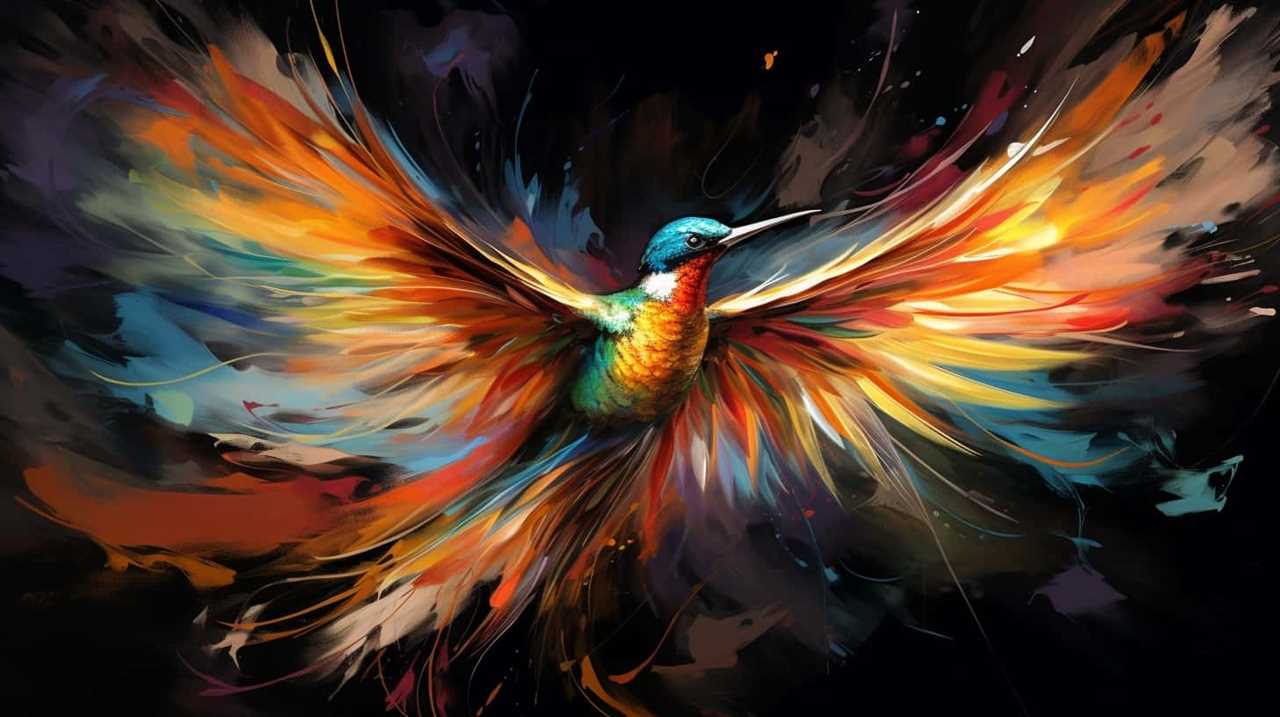
Letting go of control is essential in the creative process. Trying to micromanage every aspect of your work can stifle your creativity and prevent you from taking risks. Instead, trust in your abilities and have faith that the process will lead you to something extraordinary. Embrace the unknown and allow yourself to be surprised by what unfolds.
Exploring unconventional methods can also help break through creative blocks. Sometimes, the best ideas come from stepping outside of your comfort zone and trying something new. Experiment with different techniques, materials, or even collaborate with others who have a different perspective. By embracing the process and being open to unconventional approaches, you may discover a whole new world of creativity.
Frequently Asked Questions
How Can I Overcome Creative Blocks by Recognizing the Creative Block?
Recognizing the creative block is crucial in overcoming it. When you acknowledge the obstacles that are hindering your creativity, you can seek support from others and find innovative ways to break through.
What Are Some Strategies for Embracing Frustration When Facing a Creative Block?
Embracing frustration when facing a creative block can be tough, but staying motivated is key. It’s important to remember that setbacks are a natural part of the creative process. Stay resilient and keep pushing forward.
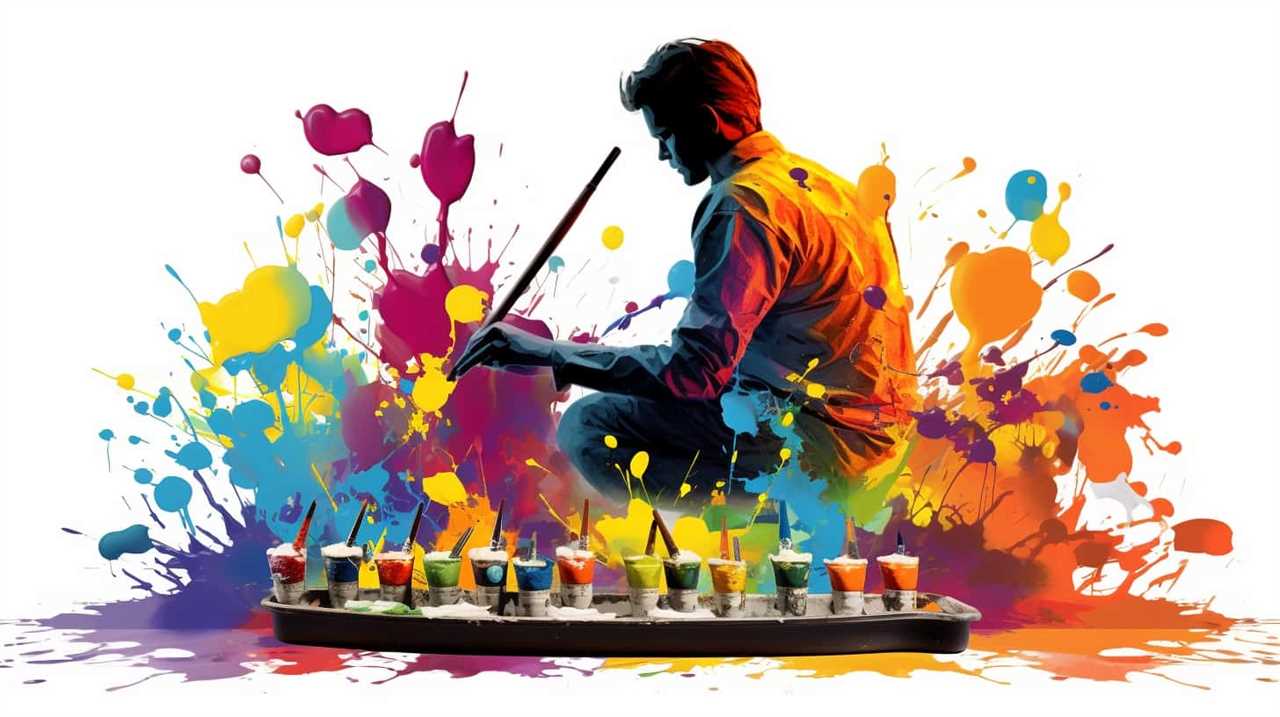
How Can Mindfulness and Meditation Practices Help in Overcoming Creative Blocks?
When facing creative blocks, you can tap into the power of mindfulness and meditation. By being present and aware, you open yourself to new perspectives and ideas. Incorporating nature in your creative process can also inspire fresh thinking.
What Are Some Ways to Find Inspiration in Everyday Life to Overcome Creative Blocks?
To find inspiration in everyday life and overcome creative blocks, immerse yourself in the world around you. Engage in creative exercises like observing nature, exploring new environments, and seeking out diverse perspectives.
How Can Exploring Different Art Forms Help in Overcoming Creative Blocks?
Exploring new mediums and trying different techniques can help overcome creative blocks. By stepping outside of your comfort zone, you’ll find fresh perspectives and innovative ideas that can reignite your creativity.
Conclusion
So, the next time you find yourself facing a creative block, remember to recognize the frustration, embrace the process, and engage in mindfulness and meditation practices.
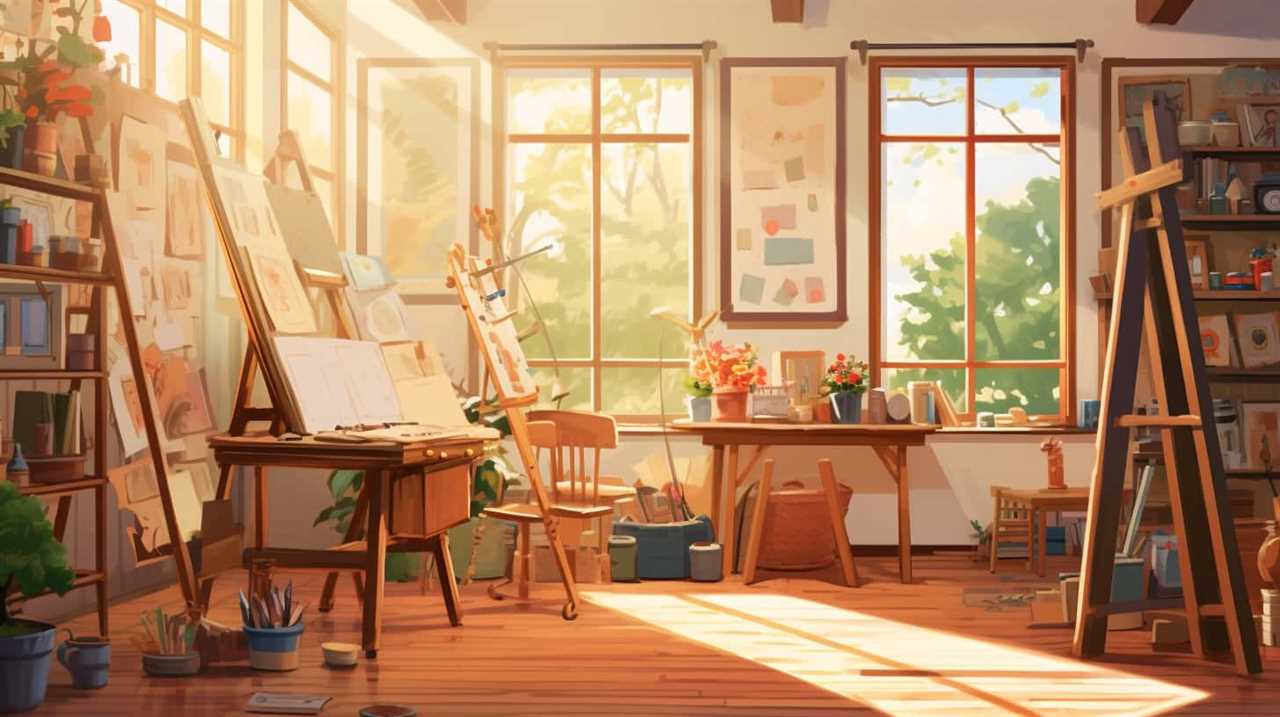
Explore different art forms, step outside of your comfort zone, and seek support from a creative community.
Embrace the imperfect process and let go of the pursuit of perfection.
By implementing these strategies, you can overcome creative blocks and unleash your true artistic potential.
Fritz is a writer whose humor and wit infuse life into words. His creativity, combined with a profound love for the English language, makes him a unique voice at afterQuotes. Fritz’s engagement with books, culture, and social media adds depth to his contributions, making them resonate with our diverse audience.
